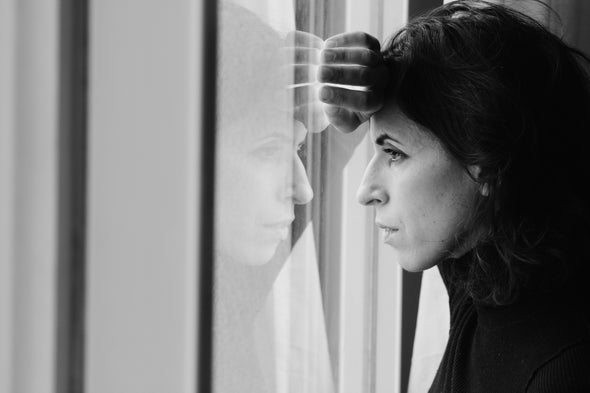Emotional Words Such as “Love” Mean Different Things in Different Languages
An analysis of more than 2,000 languages reveals differences in the way feelings are conceptualized among cultures
- By Diana Kwon on

Humans boast a rich trove of words to express the way we feel. Some are not easily translatable between languages: Germans use “Weltschmerz” to refer to a feeling of melancholy caused by the state of the world. And the indigenous Baining people of Papua New Guinea say “awumbuk” to describe a social hangover that leaves people unmotivated and listless for days after the departure of overnight guests. Other terms seem rather common—“fear,” for example, translates to “takot” in Tagalog and “ótti” in Icelandic. These similarities and differences raise a question: Does the way we experience emotions cross cultural boundaries?
Scientists have long questioned whether human emotions share universal roots or vary across cultures. Early evidence suggested that, in the same way that primary colors give rise to all of the other hues, there was a core set of primary emotions from which all other feelings arose. In the 1970s, for instance, researchers reported that people in an isolated cultural group in Papua New Guinea were able to correctly identify emotional expressions in photographed Western faces at rates higher than chance. “This was largely taken as evidence that people around the world could understand emotions in the same way,” says Kristen Lindquist, an associate professor of psychology and neuroscience at the University of North Carolina at Chapel Hill.
But more recent studies have challenged this idea. Work from a variety of fields—psychology, neuroscience and anthropology—has provided evidence that the way people express and experience emotions may be greatly influenced by our cultural upbringing. Many of these studies have limitations, however. Most have either looked only at comparisons between two cultures or focused on big, industrialized countries, says Joshua Jackson, a doctoral student in psychology at Chapel Hill. “We haven’t really had the power to test [the universality of emotion] on an appropriate scale.”
To explore the question of common emotions, Jackson, Lindquist and their colleagues teamed up with researchers at the Max Planck Institute for the Science of Human History in Jena, Germany, in one of the largest studies of cross-cultural emotional expression to date. Their work, which was published today in Science, drew on vocabulary from 2,474 languages. It revealed a great deal of variability in the way emotions are verbally expressed—as well as some underlying commonalities. “Psychologists have been debating whether emotions are universal or variable across cultures for a long time,” Jackson says. “I think what this paper shows is that both sides have some merit.”
To examine variability in emotional expression, the researchers used computational tools to create a massive database of colexifications, instances where a single word has multiple meanings. Examples include “ruka,” which means both hand and arm in Russian, and “funny,” which means both odd and humorous in English. Previous investigations of nonemotional words have demonstrated that colexified ones tend to have common properties—words that describe “sea” and “water” are more likely to be paired than those for “sun” and “water”—suggesting that speakers of a language perceive similarities in them.
The team then used its database to generate networks of colexified words among 20 language families (groups of languages that share ancestral roots) to compare emotion-associated vocabulary worldwide. Doing so revealed significant differences in how emotions were conceptualized across cultures—three times more variation than in terms used to describe color. For example, in some languages, the words for “surprise” tended be grouped with those for fear, while in others, the same concept was paired with more pleasant states, such as happiness. Through further analysis, the researchers also found that this diversity was partially dependent on the geographical proximity of language families—the closer they were, the more commonalities they were likely to share. “That suggests the extent to which cultures were likely to have historical contact, either via trade or migration or conquest allowed these cultures to interact and perhaps transmit and borrow emotion concepts from one another,” Lindquist says.
On the other hand, the researchers also found some underlying similarities. Language families tended to differentiate emotions based on their valence (how pleasant or unpleasant they were) and activation (the level of excitement they elicited). For instance, words that expressed joy were unlikely to be grouped together with those for regret. There were exceptions, however: some Austronesian languages paired the concept of love, a typically positive emotion, with pity, a typically negative one.
“This is an important study,” says William Croft, a professor of linguistics at the University of New Mexico, who wasn’t involved in the work. “It's probably the first time an analysis of the meanings of words has been done at this scale.” One of the novel things about this project is that the findings show both universal and culture-specific patterns, Crofts adds. He points out, however, that because some of these families cover a large number of languages across a wide geographical area, it will be important to further examine the underlying cultural factors.
Another limitation of the study lies in the imperfect nature of translations, says Asifa Majid, a professor of psychology at the University of York in England, who penned an accompanying commentary. This is especially the case when it comes to words for emotion, which can be difficult to express in words—linguists may only obtain approximate translations of such terms while documenting word lists out in the field. Nevertheless, these findings raise a fascinating question about cross-cultural variation in human emotion, Majid adds. “Where we find variation, is it only in language or is it reflecting something deeper about how people experience emotions, too?”
ABOUT THE AUTHOR(S)

Diana Kwon
Diana Kwon is a freelance science journalist who covers health and the life sciences.
Credit: Nick Higgins



Geen opmerkingen:
Een reactie posten